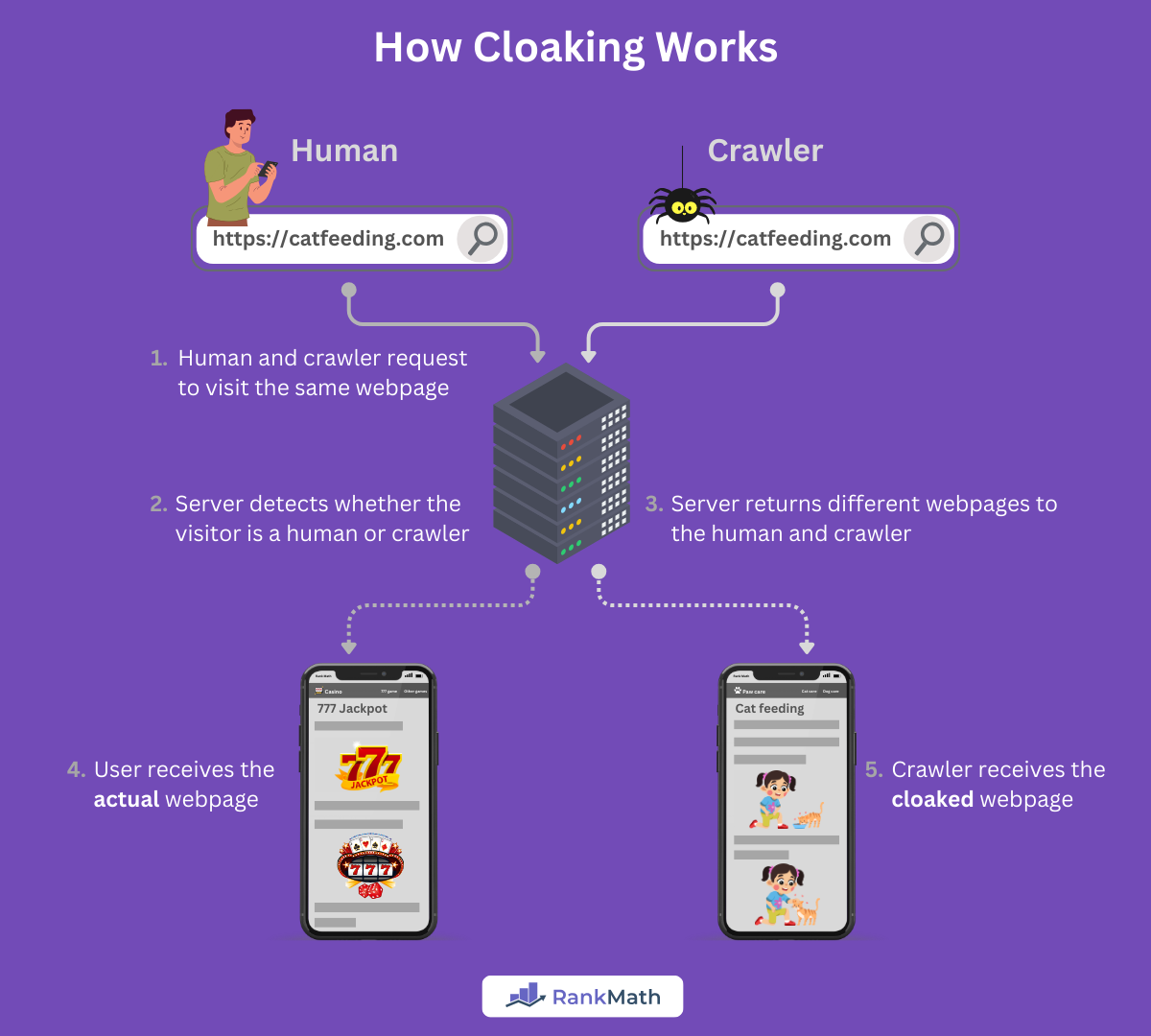What is Cloaking?
Cloaking is the practice of showing visitors and search engines different versions of the same webpage. For instance, imagine you searched for “chocolate cake recipe” on Google.
However, when you visit one of the results, you are redirected to a spammy page filled with content about diet pills and gambling ads. Meanwhile, when グーグルボット visits the same page, the site displays the chocolate cake recipe you searched for.
While cloaking can be done with good intentions, it is mainly used to deceive search engines and manipulate search results. So, it is generally considered a black hat SEO technique. It even goes against Google Search Essentials guidelines, and Google will demote or deindex sites that are found cloaking their content, even if it was done with no malicious intent.
There are different methods of cloaking the content on a webpage. Some common cloaking strategies include:
- Using text that is accessible to search engines but invisible to human visitors
- Redirecting human users to a site different from the one displayed on search results pages
- Showing different versions of the webpage depending on whether the visitor is a human or a search engine crawler
How Cloaking Works
Cloaking works by evaluating the visitor and then determining which page to display.

Websites use different methods to identify their visitors. Some common identification methods include using the user-agent or IP address.
These techniques work because the user-agent and IP addresses of most search engine crawlers are well-known. Thus, sites can easily identify crawlers and show them pages that comply with search engine guidelines while the visitor sees the cloaked page.
Many other sites also look for cookies or determine whether the visiting device permits the use of JavaScript. These techniques work because crawlers typically do not use cookies and are usually unable to access them. Crawlers also have limited capabilities when rendering JavaScript and may not execute it like a browser would.
Why You Should Avoid Cloaking
Cloaking is a black hat SEO technique. It violates Google Search Essentials guidelines and could cause Google to demote your rankings or remove your content completely from search results pages.
Many sites use cloaking to trick search engines, rank on 検索結果ページ, and get traffic. However, some sites may use cloaking techniques involving JavaScript to provide visitors with a richer user experience.
However, the Google Search Essentials guideline forbids all forms of cloaking, regardless of the reason for doing so. So, cloaking done to improve the results shown to visitors is also considered a black hat SEO technique.
In addition to incurring Google’s penalty, cloaking could lead to a poor ユーザーエクスペリエンス when visitors are served a different webpage that does not interest them and is different from the one they expect to see. This makes you appear untrustworthy, increases your bounce rate, and causes your visitors to leave your site and never return.